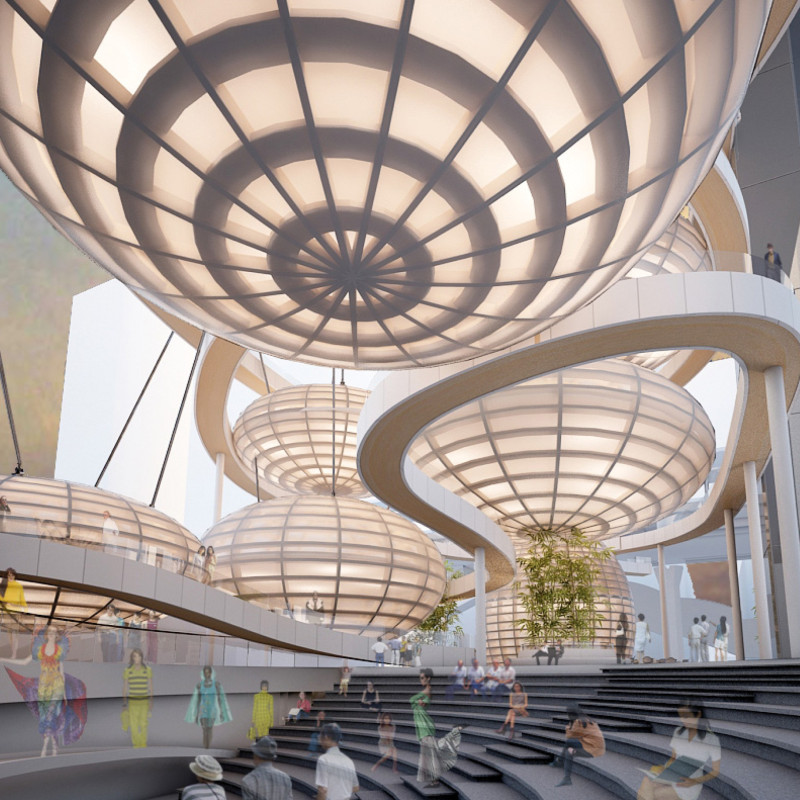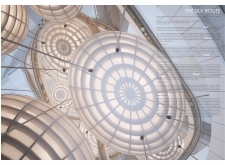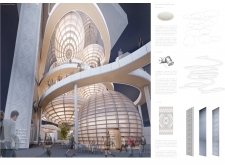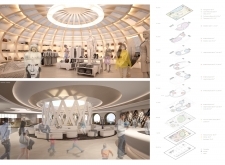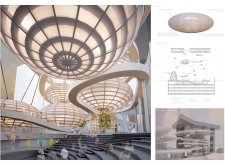5 key facts about this project
## Project Overview
Located in Bangkok, Thailand, "The Silk Route" serves as a novel architectural concept that merges functionality with cultural relevance. The design reflects the historical significance of the silk trade, utilizing modern architectural principles to create a dynamic environment for fashion and art. The intent is to cultivate a community-focused space that emphasizes interaction and connectivity while paying homage to the intricate networks established by this ancient trade.
## Spatial Strategy
The layout is intentionally designed to inspire exploration and engagement, with a carefully planned flow that encourages visitors to navigate through various levels. Public areas and boutique spaces are interspersed throughout, promoting social interaction and a sense of community. The organization reflects the interconnected nature of weaving, mirroring the seamless transitions found along historical trade routes.
## Materiality and Sustainability
The material selection emphasizes ecological consciousness and visual impact. Laminated reclaimed timber serves as a primary structural element, while semi-transparent ETFE panels enhance natural light distribution within the space. Extensive use of wood in interior areas provides warmth, and glass storefronts foster a relationship between the interior and external environments. Fabric-like materials contribute to the lightweight visual appeal of the structure. Sustainability is further prioritized through the incorporation of natural ventilation systems and well-placed green spaces, reinforcing a commitment to environmentally responsible design.
Distinct architectural features, such as the cocoon structures and the central forum for fashion events, are integral to the project. These elements enhance functionality while fostering a vibrant atmosphere for cultural exchange and community engagement. The thoughtful integration of ramps and open passages also reflects a commitment to accessibility, ensuring that the space is welcoming to all visitors.


